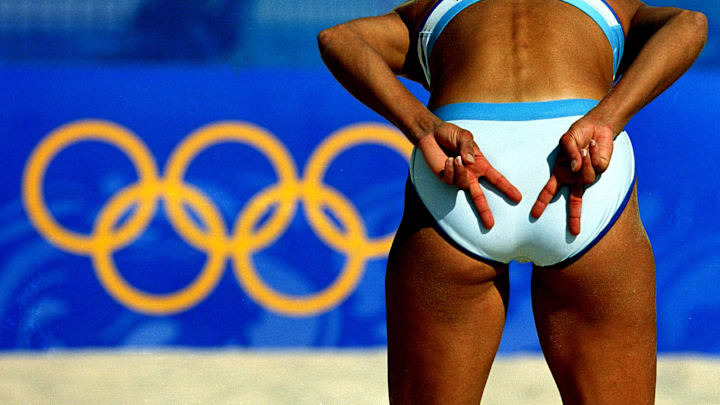Throughout beach volleyball games, including those at the 2024 Summer Olympics in Paris, players often flash hand signals behind their backs. Because players switch positions during a game, it isn’t always the same person signaling. But it is typically whoever’s functioning as the blocker—the player responsible for blocking the ball close to the net while their partner, the defender, covers the rest of the court behind them. The hand signals correspond to different kinds of blocks, so the defender knows which shots will get blocked and which ones they need to defend.
Which hand you use to signal isn’t arbitrary. A left-hand signal denotes how you plan to block your left-most opponent (on the right side of their half of the court). A right-hand signal corresponds to your right-most opponent (on the left side of their half of the court).
Technically, players can come up with whatever gestures they want—but there is a system of tried-and-true signals already in place. Here’s a rundown of the most common ones.
One finger
One finger means you’re planning to block the line—in other words, you’ll stand right in front of your opponent to block a shot straight down the court. Your opponent can try to hit the ball over your head, but their best option is often to avoid you by hitting it at an angle. If you toss up one finger, your defender knows to defend the angle. As beach volleyball player Maddison McKibbin points out in the video above, you can remember that one finger signals blocking the line because it … looks like a line.
Two fingers
And two fingers make an angle—so it’s a fitting signal for blocking the angle. This is essentially the reverse of blocking the line. You position yourself at an angle from your opponent so you can block their angled shot, and your defender can block the line.
Three fingers
Three fingers signals a fake-out sometimes called a “show and take.” You step into the path of the angled shot, so the hitter thinks you’re blocking the angle and goes for the line. Then, at the last minute, you step into the line and block their shot.
Four fingers
Four fingers is just the opposite. You step into the line to make your opponent think you’re blocking the line. They go for the angle, and you shift sideways just in time to block their shot.
Fist (or open hand)
A closed fist or an open hand isn’t a set plan: You’re going to read the hitter in the moment and make a last-minute call on where to block.
Shaka
The shaka symbol—pinky and thumb extended—signals a spread block (a.k.a. a split block), wherein you spread your arms wide and cover as much of the net as possible, often positioned near the middle of the court.
Discover More About the Summer Olympics:
